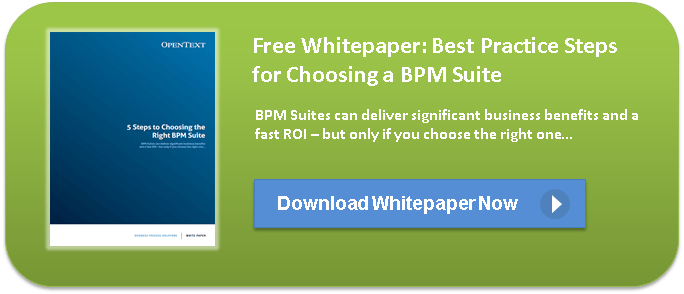Smart BPM Focuses on People
Is Your AI and Automation Strategy Right for You?
Even the best business process enhancements can fail without a smart business process management (BPM) strategy. As companies expend large sums to undergo unprecedented levels of digital transformation, the cost of failure is growing exponentially, bringing BPM to the front and center of corporate conversations.
Underlying factors in unsuccessful BPM rarely trace back to the projects themselves. Instead, it boils down to a people problem. Process enhancements founder when company-wide commitment is lacking. Strong managers understand the critical role people play in BPM success, and they design management methods accordingly.
Project Plan
Despite the heavy financial investment in BPM, researchers have determined that adoption of even the most innovative technological enhancements suffers during deployment, because there is no project plan. Without a clear, well-articulated vision, gaining commitment at all levels of the organization suffers, making it far more difficult to create the needed cascade of communication and accountability.
Business process managers must have clear goals, along with measurable and time-bound performance metrics, to ensure all relevant staff members understand what is expected of them and why.
Executive Sponsorship
Though most project managers know that creating the required communication and accountability cascade is near-impossible without commitment from the highest levels of the organization, a surprising number fail to sell the project to senior managers. Executive sponsorship designates a clear leader and involves a decision maker in the project, lending BPM a level of authority crucial for success.
Collaboration
BPM cannot exist in a vacuum. Successful projects involve collaboration with internal and external stakeholders, and smart leaders begin by engaging these individuals through planning and pilot programs. Feedback serves dual purposes. First, the additional viewpoints can point out critical gaps between proposed digital transformation plans and current business needs, offering an opportunity to correct such issues before a company-wide rollout.
Second, early adopters will later become strong advocates and outspoken proponents among peers. Including them in the project from the start typically results in a personal investment in the project's success. When full-scale deployment takes place, these individuals work with colleagues to meet and exceed performance metrics.
As with any initiative, success depends almost entirely on end-user buy-in. Creating a clear, specific project plan, gaining commitment from executive leaders and collaborating with internal and external stakeholders is the clearest path to BPM effectiveness.


